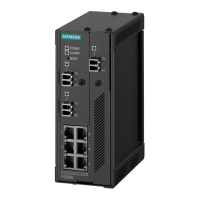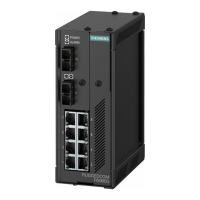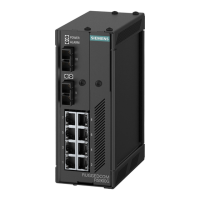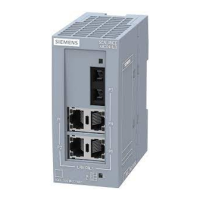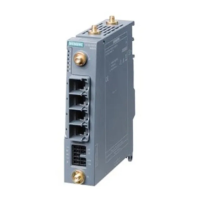Chapter 7
Examples
RUGGEDCOM NETCONF
Reference Guide
80 Getting the System Name
• Section7.35, “Enabling the DHCP Server Service”
• Section7.36, “Disabling an Ethernet Port”
• Section7.37, “Enabling an Ethernet Port”
• Section7.38, “Checking an IP Address on a Specific Port using the Interfaces Namespace”
• Section7.39, “Retreiving All Data From Running Database Including Default Values”
• Section7.40, “Retreiving All Data From Running Database Including Default Tags and Values”
• Section7.41, “Changing a User's Password”
• Section7.42, “Displaying the Status of the IPsec Service”
• Section7.43, “Selecting a Certificate for an IPSec Tunnel”
• Section7.44, “Installing a CA Certificate”
• Section7.45, “Configuring a Signed CA Certificate”
• Section7.46, “Installing a Private Key to a Signed CA Certificate”
• Section7.47, “Installing a CRL File”
• Section7.48, “Removing a Certificate”
• Section7.49, “Removing a CA certificate”
• Section7.50, “Removing a CRL File”
Section7.1
Getting the System Name
In this example, a single <rpc> queries the running configuration and returns the system name.
This example shows how to issue a query for configuration data directly from the running configuration.
<rpc message-id="2"
xmlns="urn:ietf:params:xml:ns:netconf:base:1.0" with-defaults="true">
<get-config>
<source>
<running/>
</source>
<filter type="subtree">
<admin xmlns="http://ruggedcom.com/ns/rmf_admin">
<system-name></system-name>
</admin>
</filter>
</get-config>
</rpc>]]>]]>
Section7.2
Getting the ROX Release
In this example, a single <rpc> queries the running configuration and returns the ROX release information.
This example shows how to issue a query for fixed system data from the device.
<rpc message-id="2"
xmlns="urn:ietf:params:xml:ns:netconf:base:1.0">
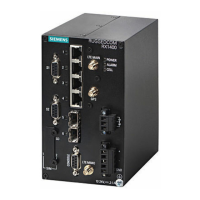
